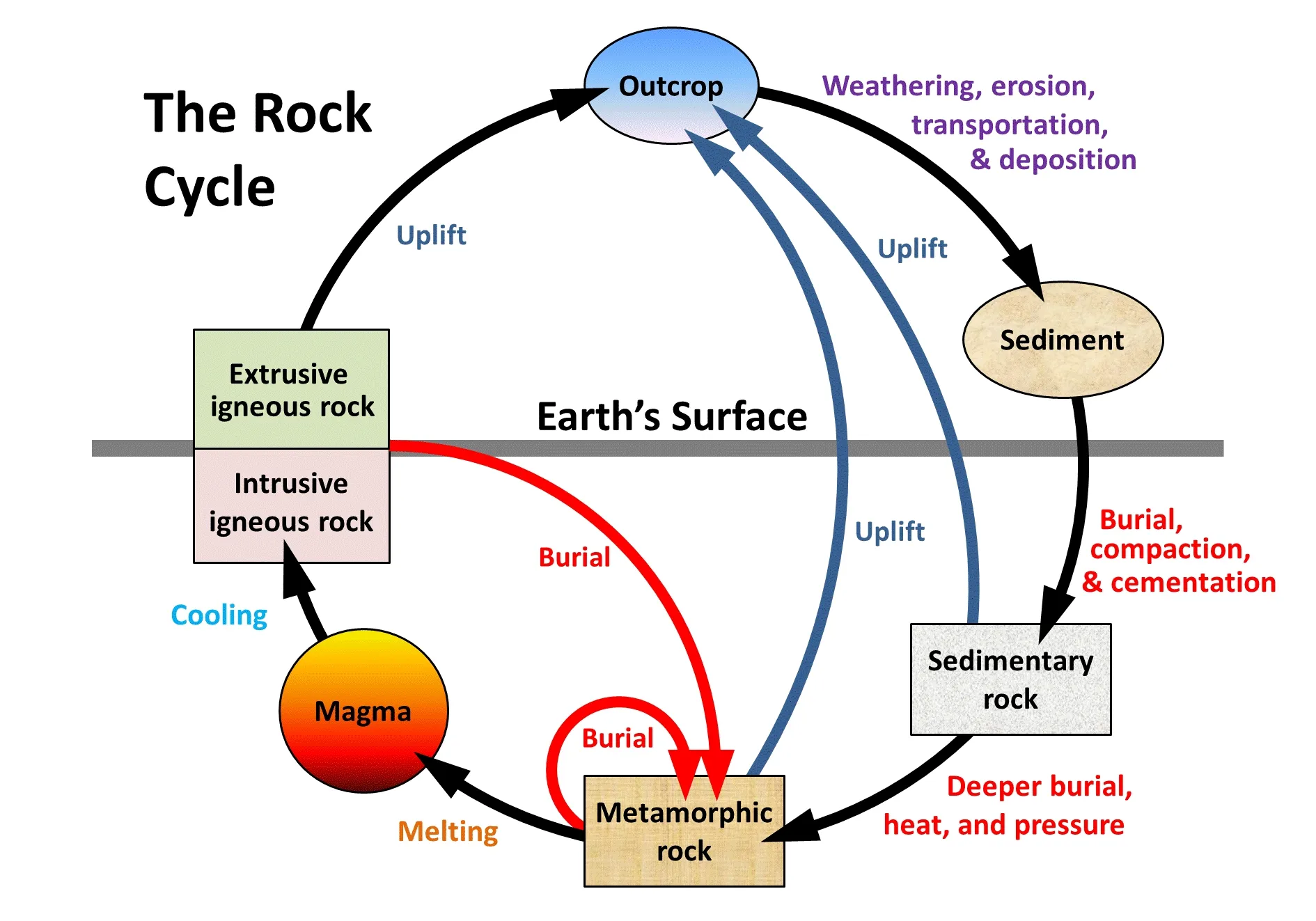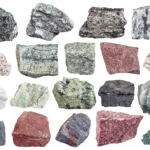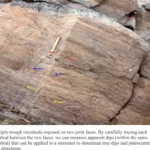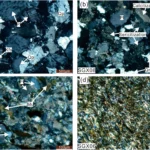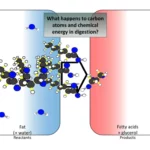Imagine rocks, not your average ones, but special ones that have gone through a crazy makeover underground. These rocks, called metamorphic rocks, are like detectives holding clues about the Earth’s past. They hold secrets of heat, pressure, and chemical changes that have twisted and reshaped them over time. Here’s the cool part: by studying their unique features, scientists can piece together the amazing journey of these rocks, from their origins deep within the planet to the surface where we see them today. Get ready to dive into the mysterious world of metamorphic rocks and unravel the intriguing tale of their transformation!
Which of the following would be a clue that a rock is metamorphic?
Imagine you’re on an adventure, exploring the world, and you stumble upon a captivating rock. Curiosity sparks within you, and you want to uncover its secrets – its origins, its composition, and the forces that have sculpted it. To truly understand the tale of a rock, it’s essential to grasp the enigmatic process of metamorphism.
Metamorphosis is the remarkable journey a rock embarks on when it encounters intense heat and pressure. It’s akin to placing a piece of clay in a kiln, transforming its structure and minerals, resulting in a completely different material. In the realm of geology, metamorphism is the process where existing rocks, known as protoliths, undergo significant changes in their mineral makeup and physical characteristics due to shifts in temperature, pressure, and chemical surroundings.
So, how do you recognize if a rock has undergone this metamorphic transformation? Here are some telltale signs:
- Texture: Metamorphic rocks often exhibit a distinct layered or foliated texture. This is because the pressure and heat have aligned the minerals within the rock.
- Mineralogy: Metamorphic rocks frequently contain minerals not found in igneous or sedimentary rocks. These minerals form as the original minerals in the rock undergo alterations due to heat and pressure.
- Hardness: The hardness of metamorphic rocks can vary compared to igneous or sedimentary rocks. This variation depends on the specific minerals present within the rock.
To further illustrate the concept, let’s explore some common examples of metamorphic rocks:
- Marble: This captivating rock originates from limestone, a sedimentary rock primarily composed of calcite. When limestone is subjected to the transformative powers of heat and pressure, the calcite recrystallizes, giving rise to the exquisite beauty of marble.
- Slate: This versatile rock originates from shale, a sedimentary rock composed of clay and other minerals. As shale undergoes metamorphic processes, the clay minerals recrystallize, creating the unique layered structure of slate.
- Gneiss: This complex rock originates from granite, an igneous rock composed of quartz, feldspar, and mica. When granite faces the metamorphic heat and pressure, its minerals recrystallize, resulting in the distinct banded appearance of gneiss.
Metamorphic rocks hold significant value as they provide valuable insights into the geological history of an area. By studying these intriguing rocks, geologists unravel the story of the rock types that existed in the past and uncover the forces that have shaped them, offering us a glimpse into the Earth’s dynamic history.
Metamorphic rocks provide clues about the geologic history and environment in which they formed. Understand how metamorphic rock formed and become an expert in rock identification.
Does it have a different composition or texture than the protolith?
Picture this: you’ve got a rock, but it’s not like any other rock you’ve seen before. Its colors are vibrant, its texture is smooth, and its shape is unique. You might wonder, how did this rock come to be?
Well, the answer lies in the world of metamorphism. That’s when rocks go through a wild transformation, like a caterpillar changing into a butterfly. Intense heat, squishing pressure, and bubbling fluids get to work, giving these rocks a whole new makeover.
So, what happens to the rock during this crazy transformation? Let’s break it down:
Composition Changes: A Chemical Adventure
Just like a chef can change the taste of a dish by adding new ingredients, metamorphism can introduce new minerals into the rock. Or, it can make the existing minerals rearrange themselves into different patterns. The type of minerals that form depends on what the rock was made of before and how hot and squished it got. For example, a rock made of limestone, which is mostly calcite, can turn into a beautiful marble. Marble has recrystallized calcite, sometimes with other fancy friends like dolomite or tremolite.
Texture Changes: From Smooth to Folded
Metamorphism can also play around with the rock’s texture. Think of it like a sculptor working with clay. Heat and pressure can make the minerals line up in certain directions, creating what we call foliated textures. Rocks like schist and gneiss end up with parallel lines or layers of minerals. But some metamorphic rocks, like quartzite or marble, don’t have that layered look and are called non-foliated.
Key Takeaways: Unlocking the Clues
Here’s the gist of it all:
- Metamorphic rocks can have a different chemical makeup than the rocks they started out as, thanks to new minerals forming or old ones rearranging.
- The way the minerals line up can give metamorphic rocks a striped or layered texture, known as foliated. Others, called non-foliated, don’t have that layered look.
- By comparing the composition and texture of a metamorphic rock to its possible origins, we can get a glimpse into the rock’s history.
Are there index minerals present?
When geologists study metamorphic rocks, they look for clues to understand how these rocks have changed over time. One important clue is the presence of index minerals. Index minerals are like geological detectives that can tell us about the temperature and pressure conditions that the rock experienced during metamorphism.
Imagine metamorphic rocks as the results of a geological kitchen experiment. Just like a chef uses different cooking methods to create different dishes, metamorphism uses heat and pressure to transform ordinary rocks into something completely different. Index minerals are like the ingredients that the chef uses. Each index mineral is stable within a specific range of temperature and pressure, so its presence in a rock tells us something about the conditions that the rock experienced during metamorphism.
For example, if we find a rock that contains garnet, we know that the rock must have been subjected to high temperatures. Garnet is a mineral that is stable at high temperatures, so its presence tells us that the rock must have been heated to a high temperature during metamorphism.
Index minerals are not just helpful for determining the temperature and pressure conditions that a rock experienced during metamorphism. They can also tell us about the original rock type (protolith) and the metamorphic journey that it underwent. By studying the index minerals in a rock, geologists can piece together the story of how the rock formed and changed over time.
Here is a breakdown of the key takeaways for the importance of index minerals:
- Index minerals act as geological detectives, unveiling the metamorphic conditions a rock has faced.
- Their existence in a rock serves as a pivotal clue in establishing metamorphic grade.
- Index minerals offer insights into the original rock type (protolith) and the metamorphic metamorphosis it endured.
- Recognizing index minerals is a critical skill for geologists, assisting them in deciphering the metamorphic histories of rocks.
Here is a table summarizing some common index minerals and the metamorphic conditions they indicate:
| Index Mineral | Metamorphic Conditions |
|---|---|
| Garnet | High temperature and pressure |
| Staurolite | Medium temperature and pressure |
| Kyanite | High pressure and low temperature |
| Andalusite | High temperature and low pressure |
By studying index minerals, geologists can unravel the metamorphic histories of rocks and gain a deeper understanding of Earth’s geological history.
Are there other indications of a specific metamorphic condition?
You bet there are! Besides foliation and recrystallization, there are more sneaky ways to tell the story of a metamorphic rock’s past.
The Sherlock Index
Imagine detectives using clues to solve a crime. In the world of rocks, certain minerals do the detective work. These “index minerals” show up only when the temperature and pressure conditions are just right. It’s like a fingerprint of the metamorphic world.
Chemical Signatures
Just like a chef uses spices to create unique dishes, different temperatures and pressures bring out different flavors in rocks. The presence and balance of certain chemical elements give geologists a taste of the metamorphic conditions the rock has been through.
Texture Tells a Tale
The crystals in a metamorphic rock don’t just grow willy-nilly. The size, shape, and overall texture give clues to the temperature and pressure the rock has experienced. Think of it as a rock’s fashion statement, telling a story about its metamorphic past.
Phase Diagrams: Where Clues Converge
Phase diagrams are like maps showing where different minerals hang out in the pressure-temperature realm. By plotting the mineral buddies found in a metamorphic rock on a phase diagram, geologists can pinpoint the exact pressure and temperature conditions the rock formed under.
The Clues All Add Up
It’s like a detective solving a case. By combining all these clues – index minerals, chemical composition, texture, and phase diagrams – geologists can piece together the metamorphic history of a rock, revealing the extreme conditions that shaped it deep within the Earth’s crust.
FAQ
Q1: How can we identify whether a rock is foliated or not foliated?
A1: Foliated metamorphic rocks display ribbon-like layers or bands, while unfoliated metamorphic rocks do not. This distinction is primarily based on the rock’s texture.
Q2: Does the metamorphic rock possess a composition or texture that deviates from its protolith?
A2: Metamorphic rocks often exhibit different mineral assemblages and textures compared to their parent rocks, despite potentially sharing the same overall composition.
Q3: Are index minerals present within the metamorphic rock?
A3: Index minerals are found in metamorphosed rocks and can indicate the minimum pressure and temperature conditions experienced by the rock. Their presence can help determine the metamorphic grade.
Q4: Are there discernible indications of a specific metamorphic condition, such as contact metamorphism or hydrothermal alteration?
A4: Metamorphic rocks may display evidence of specific metamorphic conditions, such as contact metamorphism (e.g., hornfels) or hydrothermal alteration (e.g., greenschist). These indications can provide insights into the geological processes that shaped the rock.
Q5: Is the rock type considered rare or unusual, potentially associated with a particular metamorphic process?
A5: Certain metamorphic rock types may be uncommon or unique, often linked to specific metamorphic processes. Identifying these rare or unusual rock types can shed light on the geological history and processes that occurred in the area.
- Funny Controversial Topics: 101+ Ideas for Lively Debates - April 24, 2025
- 20 Fun Quiz-20 Questions: Popular Now - April 24, 2025
- Epic Video Game Trivia: A History From Pong to Present - April 24, 2025
